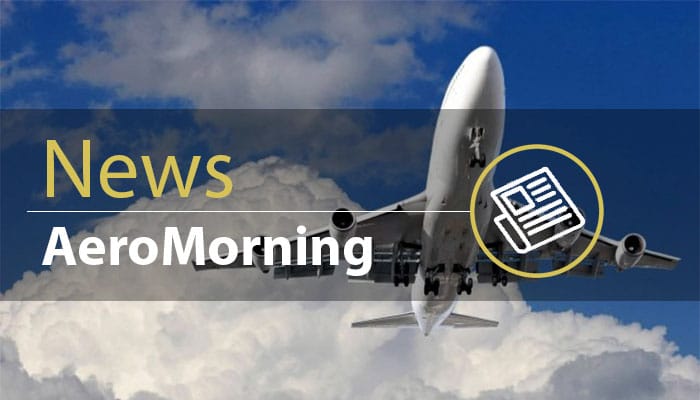Enhancing aircraft efficiency is a critical responsibility of aerospace engineers and a key aspect of ensuring the enduring success of various civilian and military aviation applications. Surmounting such a challenge entails finding ways to reduce the cost and environmental impact of manufacturing, maintaining, and operating aircraft. Modern organisations and professionals in the aerospace engineering sector are making headways in achieving this specific objective by adopting the following approaches
1.Optimise Aerodynamics
One of the primary ways aerospace engineers enhance aircraft efficiency is by optimising aerodynamics or the interaction between moving air and the aircraft. Advanced wing designs, such as blended winglets, reduce drag and improve fuel efficiency by allowing smoother airflow over the wings. Reducing drag can also be achieved by employing advanced materials, coating, and techniques to smooth the aircraft surface. These, in turn, allow for more efficient flight and reduced fuel consumption.
2.Use Innovative Materials
The use of innovative materials is crucial in reducing the weight of aircraft without compromising structural integrity. Engineers are increasingly incorporating lightweight composite materials and high-strength alloys in both the aircraft design and manufacturing stages. These materials offer significant weight reductions compared to traditional metals, resulting in lower fuel consumption and enhanced overall performance. Additionally, the durability of these materials can lead to longer service intervals and reduced maintenance costs.
3.Integrate Efficient Engine Technology
Efficient engine technology plays a pivotal role in improving aircraft efficiency. Aerospace engineers continually develop and integrate into aircraft models next-generation engines that offer better fuel efficiency and lower emissions. Hybrid and electric propulsion systems, which promise significant reductions in fuel usage and environmental impact, are also being explored as viable alternatives to conventional engines. These technologies, coupled with regular engine tuning and maintenance, ensure that engines operate at peak efficiency throughout their lifetimes.
4.Implement Energy-Efficient Systems
Aerospace engineers are also keen on developing energy-efficient systems that help reduce an aircraft’s overall energy consumption. Modern avionics systems are particularly helpful in providing precise navigation and flight management, leading to optimal flight paths and reduced fuel use. Likewise, upgraded HVAC (heating, ventilation, and air conditioning) systems contribute to energy savings by using advanced technologies to regulate cabin temperature more efficiently. These improvements lower an aircraft’s energy consumption without sacrificing passenger comfort.
5.Reduce Weight
Weight reduction is a straightforward yet highly effective method of improving aircraft efficiency. Using usincomputer-aided design (CAD), engineers continuously strive to design lighter structural components and optimise aircraft weight distribution and material usage. The use of advanced materials, such as carbon fibre composites, also offers significant weight savings. Additionally, efficient cargo handling and weight management practices contribute to shaving away unnecessary weight and enhancing fuel efficiency during flights.
6.Adopt Aircraft Design Innovations
Even before manufacturing an aircraft, steps are already in place to ensure that it’s designed for efficiency. Integrating concepts like the blended wing body design into the model, for one, offers substantial aerodynamic advantages over traditional aircraft shapes. Morphing wings, which can change shape during flight, are features that provide optimal performance under varying flight conditions. These design innovations improve fuel efficiency and enhance overall aircraft performance.
7.Enhance Propulsion Systems
Aerospace engineers are continually working to enhance propulsion systems. Ultra-high bypass engines, which feature higher bypass ratios, deliver better fuel efficiency by moving more air with less fuel. The ongoing development of electric and hybrid propulsion systems also promises significant efficiency gains, as these systems reduce reliance on fossil fuels and decrease greenhouse gas emissions.
8.Utilise Energy Recovery Systems
Energy recovery systems are becoming increasingly important in improving aircraft efficiency, maximising energy efficiency, and reducing overall fuel consumption. These can come in the form of regenerative braking systems, which recover energy during deceleration and can be implemented to power auxiliary systems or recharge batteries. Meanwhile, advanced thermal management systems can be used to efficiently manage heat generated by various aircraft systems and ensure optimal performance and energy use.
9.Tap Alternative Fuels and Power Sources
That said, the exploration and adoption of alternative fuels and power sources are critical for the future of efficient aviation. Engineers look to sustainable aviation fuels, such as biofuels and hydrogen, as enablers of significant reductions in carbon emissions. Solar power is also being investigated as a supplementary power source for auxiliary systems.
10.Make Decisions Driven by Data
Finally, data-driven decision-making is a powerful tool for enhancing aircraft efficiency. Aerospace engineers use big data analytics to monitor and analyse flight operations and identify areas for improvement. Machine learning algorithms can predict and optimise aircraft performance, ensuring that every aspect of the flight is as efficient as possible. By leveraging data, engineers can make informed decisions that lead to continuous improvements in efficiency.
From the initial design phase through to manufacturing and ongoing maintenance, every stage of an aircraft’s lifecycle presents opportunities for significant efficiency gains. Improving efficiency benefits both airlines and aircraft owners by leading to significant cost savings and reducing the environmental impact of aviation. Ultimately, the quest for efficiency in aircraft design, manufacturing, and maintenance is a win-win situation for all stakeholders as it contributes to a more sustainable and economically viable aviation industry.
Source: TAT





Be the first to comment on "10 Ways Aerospace Engineers Make Aircraft More Efficient"